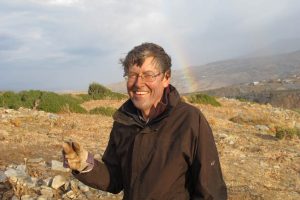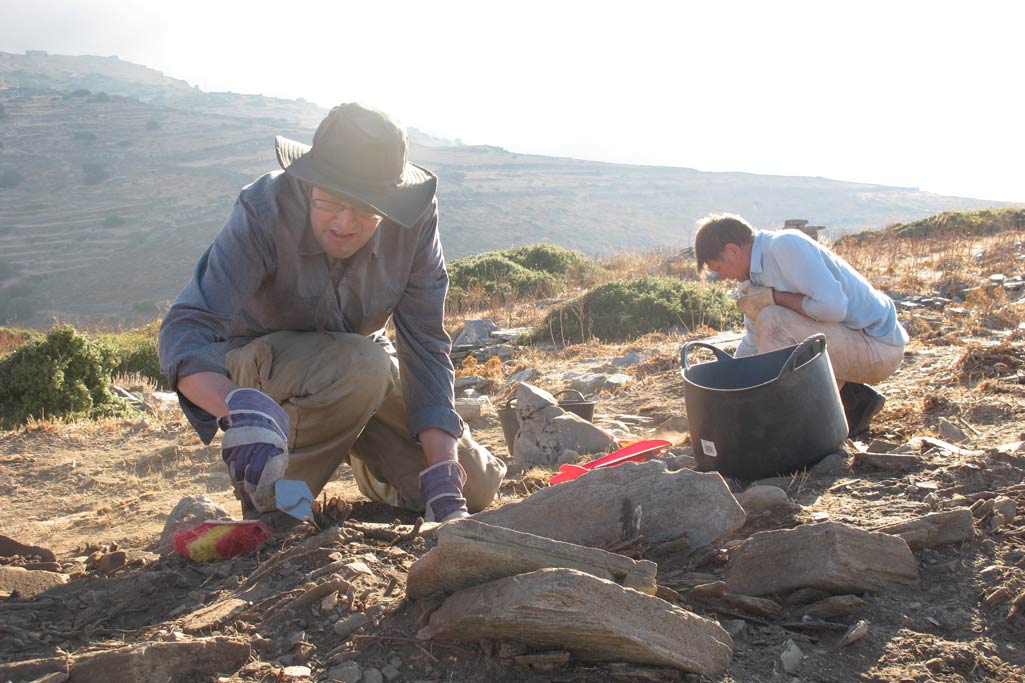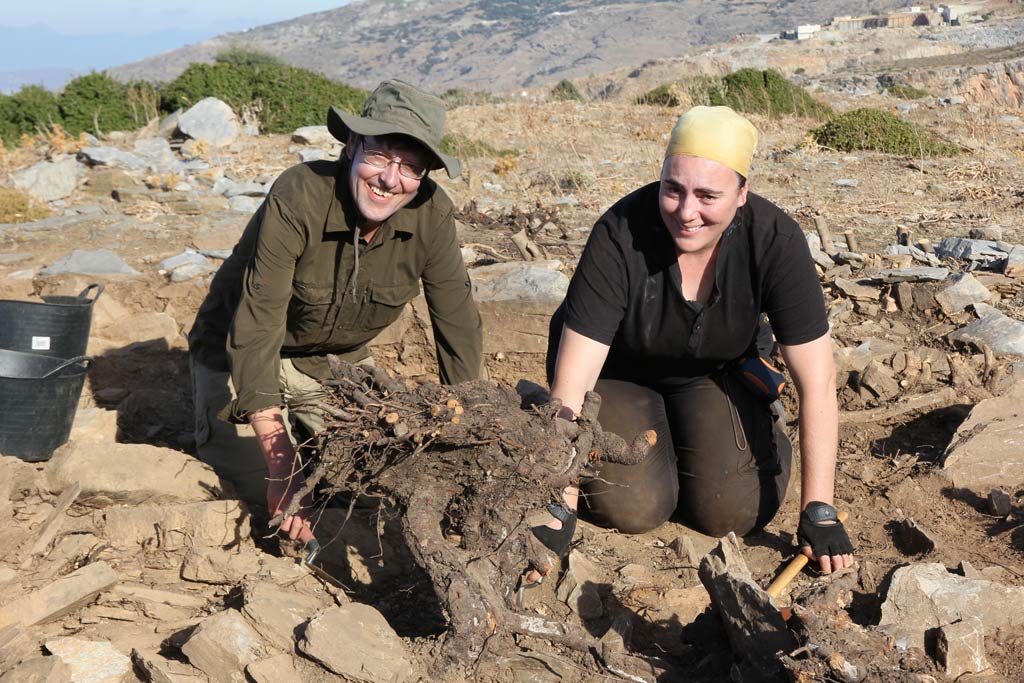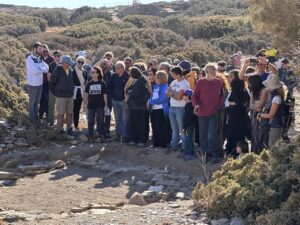by Dr Peter Londey
Classics and Ancient History, School of Cultural Inquiry
Australian National University

So there I was, genteel historian of ancient Greece (I am a lecturer at the Australian National University), kneeling among the rocks of Zagora, dust and dirt being blown over my face, in my eyes, in my hair, while I scratched the ground with my brand new Battiferro trowel, wondering why exactly I was there.
The answer is: getting experience which a historian of ancient Greece very much needs. The written sources for Greek history are so sparse overall – and almost non-existent for early Greek history – that archaeology becomes supremely important. It is not enough for a historian to read the reports. He or she needs to understand something about how archaeologists actually arrive at their conclusions.
So I spent three weeks at Zagora, working as a humble volunteer in Mel Melnyczek’s trench, where the job seemed mainly to be cleaning vegetation, moving rocks, and tidying things up. I found a few rather lowly potsherds, cleared off the top of a wall which basically we already knew was there, and did a lot of gardening, shifting and tidying. Archaeology does tend to be a tedious business.

But I learnt a great deal from Mel (whom I had previously met briefly at Paphos), about life in general and about archaeology. Mel was always honest about the educated guesswork involved in digging, as he sought to distinguish significant from insignificant soil colour changes, decipher the tangle of rocks sitting in our trench, plan where exactly it was most worthwhile extending the trench. Mel is vastly experienced, and I gained great respect both for his archaeological nous and his qualities as a trench leader.
Apart from seeing the process of archaeology at close hand for three weeks, I also had the opportunity – walking down to the site every day and getting to know it gradually over time – to ponder Zagora as an early Greek city site. What attracted people to live there? And what was it around 700 BC that suggested to them that they didn’t like living there any more? As a historian I felt I could discern answers to those questions, and the opportunity to settle into the site, day after day, rather than simply making the usual rushed visit, certainly helped.

Frankly, getting out of the office for three weeks was joy enough. But to spend them on the fantastically beautiful island of Andros made it all the better. On top of which, I met a fantastic group of people. Historians are generally not quite as gregarious as archaeologists, but I managed to escape sometimes to a quiet Greek coffee by myself. And everybody, including many young archaeologists with an impressive range of excavation and survey experience already behind them, were very welcoming. I formed friendships which I am sure will last, and I sincerely thank the three dig directors, the others in my trench, and the whole group for welcoming a fugitive historian into their midst.

I was there for the first three weeks. When I left, there was still a collapsed wall concealing whatever wonders might lie below. Perhaps by now Mel and his team have found out what those wonders are, and another note has been added to our knowledge of early Greek history.
27.10.2013



4 thoughts on “A historian gets his knees dirty”
Outstanding photography, particularly the last portrait
Thanks for the comment, TM, and I’m glad you like the photography.
And his face and hands, by the look of it … The most stimulating part of this very useful report and reflection for me is Peter’s point about taking the time to think about history in a place at the place and for more than the usual rushed visit. On my first visit to the Kashmir gate in Delhi (scene of a crucial incident in the 1857 siege) I arrived after a furious argument with my rickshaw driver about the fare. So caught up in the matter of a few rupees was I that I remember only the stoush with the rickshaw walla, not my initial impressions of the site. Having the time to look at a site from many angles over time would indeed promote useful questions and ideas. Thanks!
You’re very welcome – glad you enjoyed Peter’s perspective.